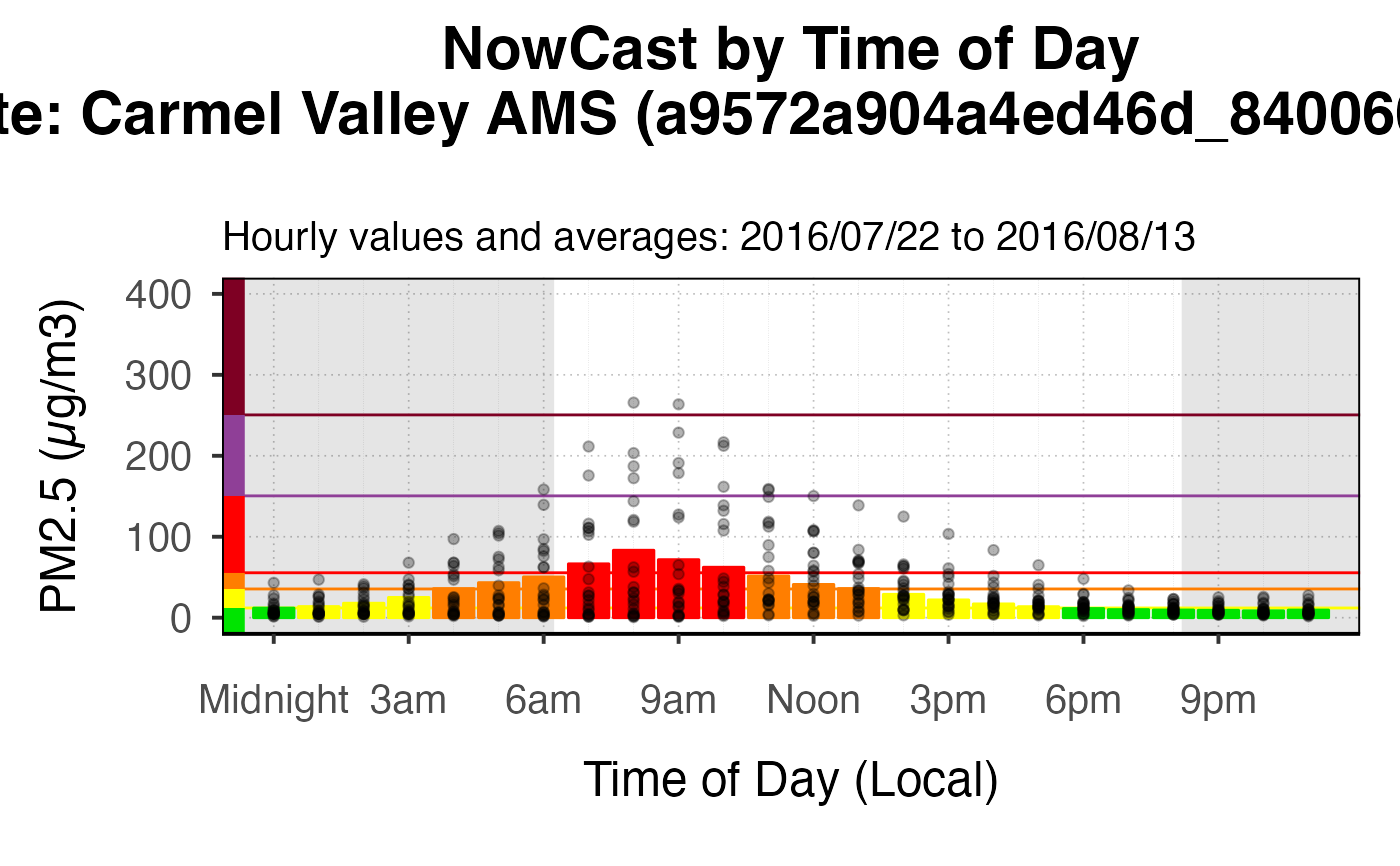Create an archival diurnal plot for one or more monitors
Source:R/monitor_ggDailyByHour_archival.R
monitor_ggDailyByHour_archival.RdThis function assembles various layers to create a production-ready archival diurnal plot for a single monitor.
The full range of data in monitor will be used unless both
startdate and enddate are specified.
monitor_ggDailyByHour_archival(
monitor,
startdate = NULL,
enddate = NULL,
id = NULL,
style = c("large", "small"),
title = NULL,
timezone = NULL,
...
)Arguments
- monitor
A mts_monitor object.
- startdate
Desired startdate for data to include, in a format that can be parsed with parseDatetime.
- enddate
Desired enddate for data to include, in a format that can be parsed with parseDatetime.
- id
deviceDeploymentID to include in the plot. This can be NULL if
monitoronly has one unique deviceDeploymentID.- style
String indicating plotting style. Either
"large"or"small".style = "large"is suitable for plots larger than 450x450px, and"small"is suitable for plots 450x450px or smaller.- title
Plot title. If NULL, a suitable title will be constructed.
- timezone
Olson timezone name for x-axis scale and date parsing. If NULL the timezone of the specified monitor will be used.
- ...
Extra arguments passed to
ggplot_pm25Diurnal().
Value
A ggplot object.
Examples
library(AirMonitorPlots)
AirMonitor::Carmel_Valley %>%
AirMonitor::monitor_trimDate() %>%
monitor_ggDailyByHour_archival()
#> Warning: The following aesthetics were dropped during statistical transformation: x and
#> y.
#> ℹ This can happen when ggplot fails to infer the correct grouping structure in
#> the data.
#> ℹ Did you forget to specify a `group` aesthetic or to convert a numerical
#> variable into a factor?
#> Warning: Removed 23 rows containing missing values or values outside the scale range
#> (`geom_pm25points()`).
 if (FALSE) { # \dontrun{
# Fail gracefully if any resources are not available
try({
monitor <- AirMonitor::airnow_loadLatest()
monitor_ggDailyByHour_archival(monitor, id = "51b9bcb4eaac7c9d_530330030")
}, silent = FALSE)
} # }
if (FALSE) { # \dontrun{
# Fail gracefully if any resources are not available
try({
monitor <- AirMonitor::airnow_loadLatest()
monitor_ggDailyByHour_archival(monitor, id = "51b9bcb4eaac7c9d_530330030")
}, silent = FALSE)
} # }